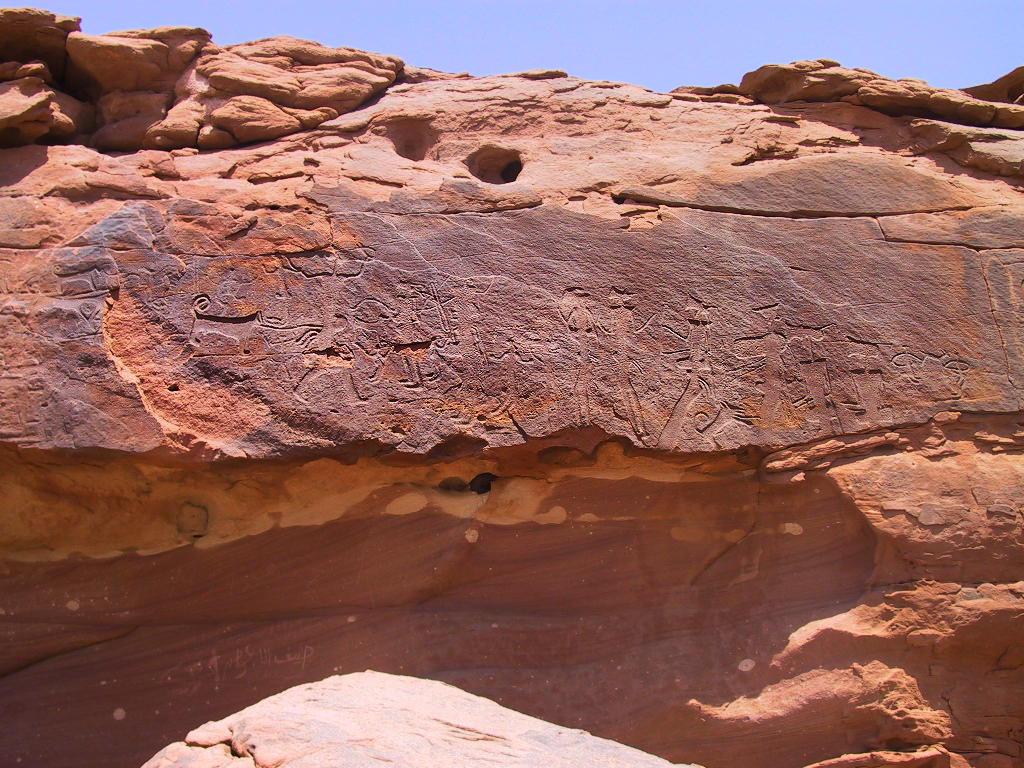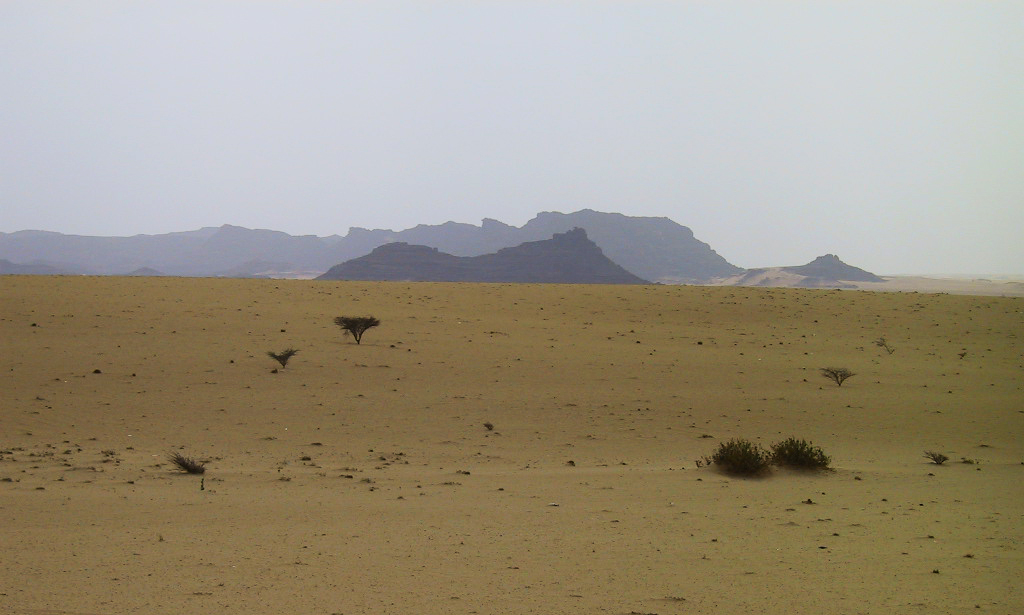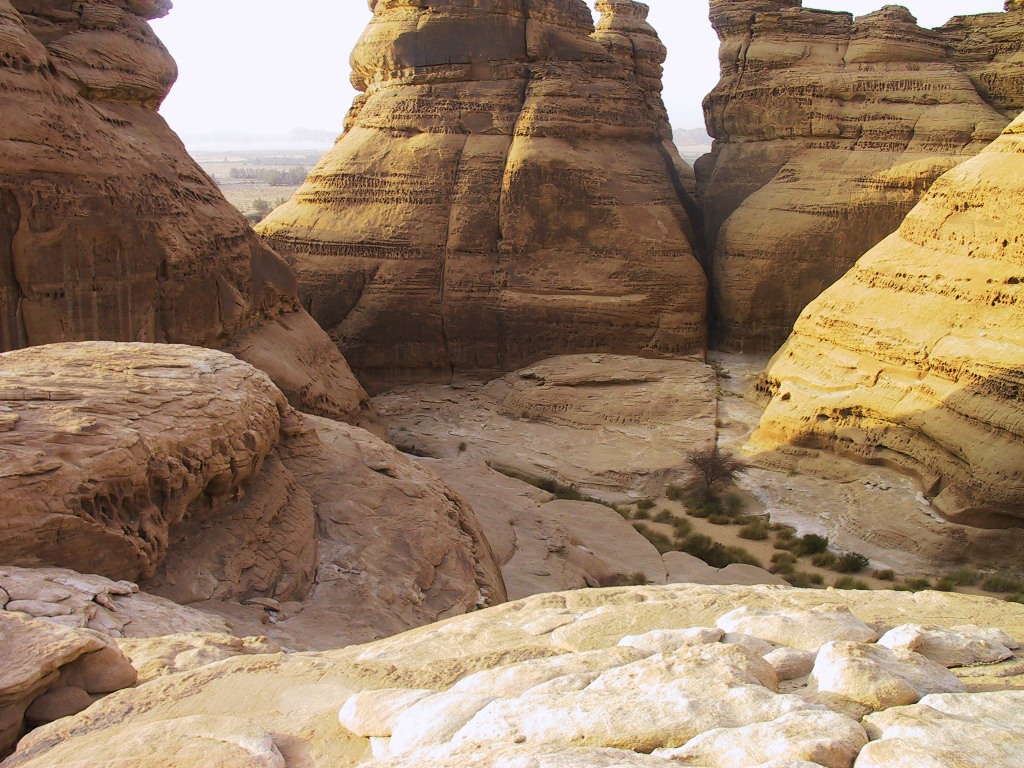


An article on arabianow - British Scientist Uses Saudi Petroglyphs to Map Climate Change - reports on recent research which reveals that Saudi Arabia may have once been an oasis of greenery and lush wildlife, home to vibrant plant and animal life. The discovery was made by a team of archaeologists studying rock art such as that found in the Hail Region of the Arabian Peninsula, where images carved into rocks - petroglyphs - provided researchers a glimpse into the periods of warm weather that once gave the country its wet climate.

Petroglyphs from the Al Hanakiyayh rock art site. Image: Simon Woodward
The desert environment of modern-day Saudi Arabia likely appeared between 6,000 and 11,000 years ago, according to Oxford University researchers on Arabian archaeology. By studying depictions of animal life, which included leopards, lions, hyenas, and cheetahs, the team determined that biodiversity once thrived in the region.
Petroglyphs in Saudi Arabia reveal climate change https://t.co/ygnFzj97Vv pic.twitter.com/RtSmOFhllp
— Bradshaw Foundation (@BradshawFND) July 22, 2016
Petroglyphs from the Al Musaiqrah rock art site. Image: Simon Woodward
Sandra Olsen, an archaeologist affiliated with the Biodiversity Institute and Natural History Museum at the University of Kansas, claims that rock art is the best source for what kinds of animals lived there in the past. Indeed, the sudden disappearance in animal life depictions reflected the return of desert-like conditions to Saudi Arabia.

Maria Guagnin, a lead researcher in archaeology at Oxford, states that there a lot of environmental and biological information captured in the images.

The rock art in the Hail Region of Saudi Arabia is inscribed on the UNESCO World Heritage List. It consists of 2 sites - Jabel Umm Sinman at Jubbah and Jabal al-Manjor and Raat at Shuwaymis. A lake once situated at the foot of the Umm Sinman hill range that has now disappeared used to be a source of fresh water for people and animals in the southern
part of the Great Narfoud Desert. The ancestors of today’s Arab populations have left traces of their passages in numerous petroglyphs and inscriptions on the rock face, with some engravings believed to be up to 10,000 years old.
Images: Dr. Simon Woodward, Leeds Becket University.
See more of the rock art of Saudi Arabia:
http://www.bradshawfoundation.com/middle_east/saudi_arabia_rock_art/index.php
by Bradshaw Foundation
Friday 09 August 2024
by Bradshaw Foundation
Wednesday 24 July 2024
by Bradshaw Foundation
Thursday 04 July 2024
by Bradshaw Foundation
Monday 01 July 2024
by Bradshaw Foundation
Wednesday 20 March 2024
by Bradshaw Foundation
Tuesday 13 February 2024
by Bradshaw Foundation
Tuesday 13 February 2024
by Bradshaw Foundation
Thursday 01 February 2024
by Bradshaw Foundation
Tuesday 28 November 2023
by Bradshaw Foundation
Thursday 23 November 2023
by Bradshaw Foundation
Monday 20 November 2023
by Bradshaw Foundation
Tuesday 31 October 2023
by Bradshaw Foundation
Thursday 26 October 2023
by Bradshaw Foundation
Wednesday 20 September 2023
by Bradshaw Foundation
Monday 17 July 2023
by Bradshaw Foundation
Sunday 09 July 2023
by Bradshaw Foundation
Friday 09 August 2024
by Bradshaw Foundation
Wednesday 24 July 2024
by Bradshaw Foundation
Thursday 04 July 2024
by Bradshaw Foundation
Monday 01 July 2024
by Bradshaw Foundation
Wednesday 20 March 2024
by Bradshaw Foundation
Tuesday 13 February 2024
by Bradshaw Foundation
Tuesday 13 February 2024
by Bradshaw Foundation
Thursday 01 February 2024
by Bradshaw Foundation
Tuesday 28 November 2023
by Bradshaw Foundation
Thursday 23 November 2023
by Bradshaw Foundation
Monday 20 November 2023
by Bradshaw Foundation
Tuesday 31 October 2023
by Bradshaw Foundation
Thursday 26 October 2023
by Bradshaw Foundation
Wednesday 20 September 2023
by Bradshaw Foundation
Monday 17 July 2023
by Bradshaw Foundation
Sunday 09 July 2023
Friend of the Foundation











